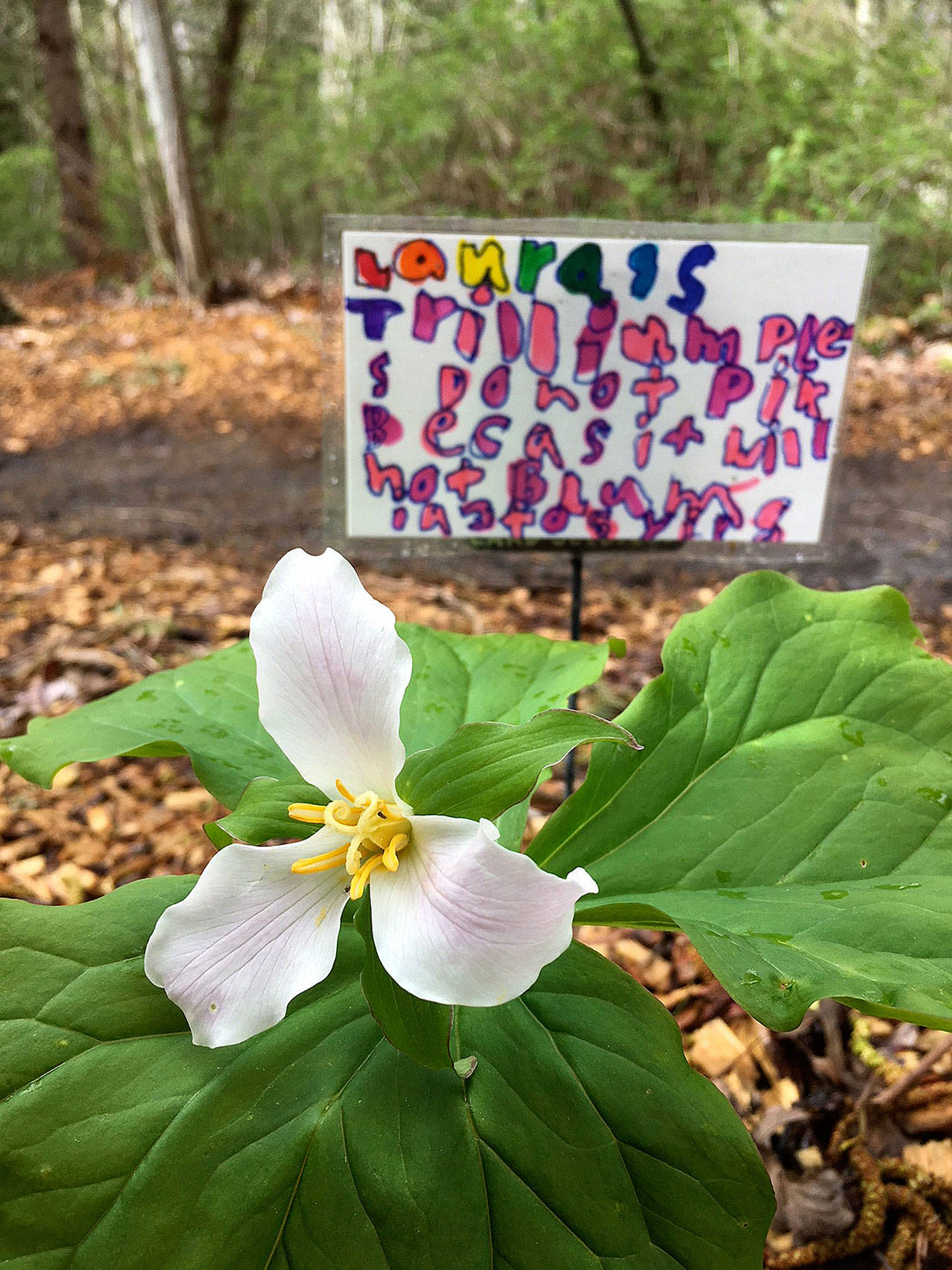By Meg Lippert
CCMIP
Until a recent Saturday morning, 6-year-old Laura Drake had never heard of trillium. But that same morning, as a participant in the Junior Naturalist Program, she observed the gleaming white three-petaled blossoms.
She learned that trillium blooms will turn from white to pink to maroon when they age, as illustrated on the reader board display at the Native Garden, across the path from the blooming trilliums. Laura also learned that trillium blossoms feed nutrients back into the plant, and that picking trillium blossoms threatens their survival and may cause them not to bloom for three to five years.
“May I adopt a plant?” Laura asked at the end of her class.
When asked which plant, she replied, “the trilliums.”
Laura returned for her next class the following week and brought a beautiful sign she had made herself for her adopted plants with an important message, “Laura’s trillium ples do not pik because it will not blum in 3 to 5 yirs.”
The Junior Naturalist Program was initiated by Concerned Citizens for Mercer Island Parks (CCMIP) to share observations and knowledge about native plants, birds, butterflies, insects, amphibians and other wildlife with children aged 6 to 10, accompanied by a parent or grandparent. Participants are learning to identify native plants, listen for and learn about native birds, record their observations, care for the Native Garden, share their knowledge with others, and be leaders in their family and community.
Laura will be leading a “Native Garden Tour for Children and Their Families” at 12:30 p.m. on April 28, during the Washington Native Plant Society Native Plant Sale in Mercerdale Park. This special tour is limited to six families.
To register for Laura’s tour and to sign up for future Junior Naturalist events, visit protectMIparks.org. For questions email protectMIparks@gmail.com. Junior Naturalist Program instructors include Rita Moore, Native Plant Steward, Washington Native Plant Society and National Wildlife Federation Habitat Steward, and Linda Anchondo, Seattle Audubon Society Master Birder.
At the end of one recent Junior Naturalist program, Anchondo pointed out a male Anna’s Hummingbird that was perched in a treetop. The hummingbird trilled, and a female Anna’s Hummingbird responded from a nearby shrub. The male zoomed directly to her, and they engaged in courtship bonding.
“We were lucky,” said Anchondo, as the participants enjoyed their cookies before departing. “It’s very unusual to have the privilege of witnessing this behavior. If we’re fortunate another time, maybe we will see their small mossy nest. Hummingbirds are amazing—not only can they fly backwards, but also they have the highest metabolism of any animal.”
Wonders abound in the Native Garden, a National Wildlife Society Certified Wildlife Habitat. By visiting frequently, observing closely and being careful not to pick or damage any plants, Islanders will be able to enjoy the Native Garden in every season of the year.



